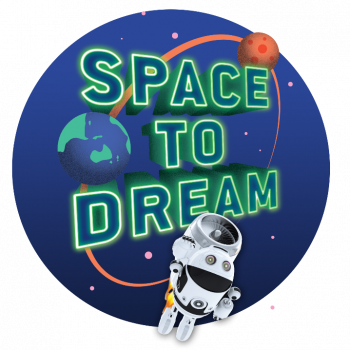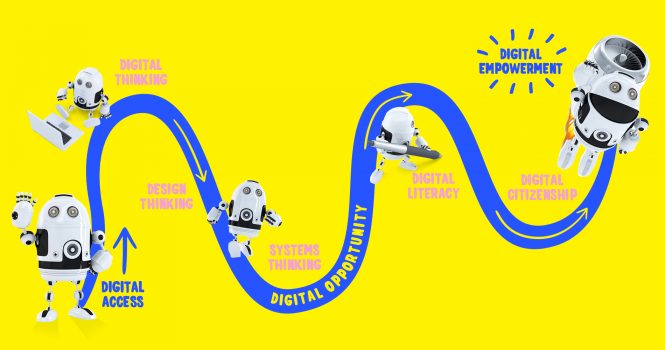Design Thinking
What is it?

A free design thinking challenge for children and young people
In January 2020 the Commissioner introduced the latest instalment in the Commissioner’s Digital Challenge.
Space to Dream can be completed at registered schools, at home or with family or in the community and is open to children of all ages.
Space to Dream is a creative design thinking challenge because empowered problem solvers = empowered digital citizens.
Space to Dream challenges every child in South Australia to use design thinking to create a toy or gadget for someone their age who is ‘moving to Mars’.
Children can use free 3D design tools from Makers Empire to make their design or can hand-draw their design.
The Challenge materials include a video from former NASA Astronaut and Space Mission Commander Pamela Melroy in which she shares her own lived experience of time in outer-space.
Selected designs from children across the State will be remotely 3D and 2D printed and displayed in a public exhibition at MOD Museum of Discovery in South Australia during November 2020. Selected designs will be featured in the Commissioner’s Virtual Gallery.
The school submitting the top-rated design will win a 3D printer donated by Challenge partners, Makers Empire.
Scouts and Guides completing Space to Dream earn the Space to Dream embroidered badge that counts towards other Scouts and Guides awards.
Once Children have finished the Challenge there is a library of free extended learning resources to explore.
Over 19,000 children took part in Learn to Speak Robot during 2019. The Challenge is set to grow over the years with the introduction of a systems thinking challenge in 2021 and digital literacy and digital citizenship challenges in 2022. The Space to Dream Challenge recurs each year and closes on the last day of school Term 3.
Access Space to Dream.
Background
The Commissioner’s Digital Challenge is the Commissioner’s state-wide initiative designed to promote digital equality for children of South Australia, because digital skills are life skills – critical to future jobs, social inclusion and to build a more equitable world.

(Above) The Digital Learning Journey
Each year the Commissioner’s Digital Challenge grows with a different area of the digital learning journey added to the mix. The Commissioner’s Digital Challenge website also contains an extensive library of resources for extended learning for children, families and teachers, across all 5 core areas of the digital learning journey.
The idea for the Commissioner’s Challenge came out of her 2017 Listening Tour, where the she travelled throughout South Australia asking children what was most important to them. They told her they wanted to be taught the things they need to know now, so they will have more opportunities to participate in creative activities. They also told her they had concerns about having the skills for high tech jobs of the future. In response to these and the voices of other children and young people with whom she has spoken, the Commissioner has set ‘engaging and empowering young digital citizens’ as one of her four key focus areas.
Aims
The Challenge has been introduced to better equip children, young people and their families in South Australia to understand the digital world and feel empowered to access its benefits through their digital skills and capabilities.
It’s also about providing educators who lack experience or confidence in this area a really simple way to get started with digital learning in their classrooms – and a way for educators who are across these areas to share this learning with their colleagues.
As we move forward in this technological age, digital inclusion largely equates to social inclusion. Digital empowerment also provides accessible tools and ways to bridge impossible gaps in equality that exist in society. So this Challenge is all about increasing digital inclusion to promote digital empowerment across the board.
It’s also about providing educators who lack experience or confidence in this area, with a really simple way to get started on digital learning in their classrooms. It’s also a way for educators who are already across many of these areas to share this learning with their colleagues.
As we move forward in this technological age, digital inclusion largely equates to social inclusion. Digital empowerment also provides accessible tools and ways to bridge impossible gaps in equality that exist in society. The Commissioner’s Challenge is all about increasing digital inclusion to promote digital empowerment across the board.
Outcomes
In its inaugural year (2019), 217 schools, 31 libraries and an estimated 19,026 children got on board with the Learn to Speak Robot Challenge. In 2020 the Commissioner launched Space to Dream and re-opened Learn to Speak Robot. Anonymous statistics showing general engagement with the Commissioner’s digital challenges indicate that similiar numbers of children and young people participated in 2020. Statistics for 2021 will be published in due course.

